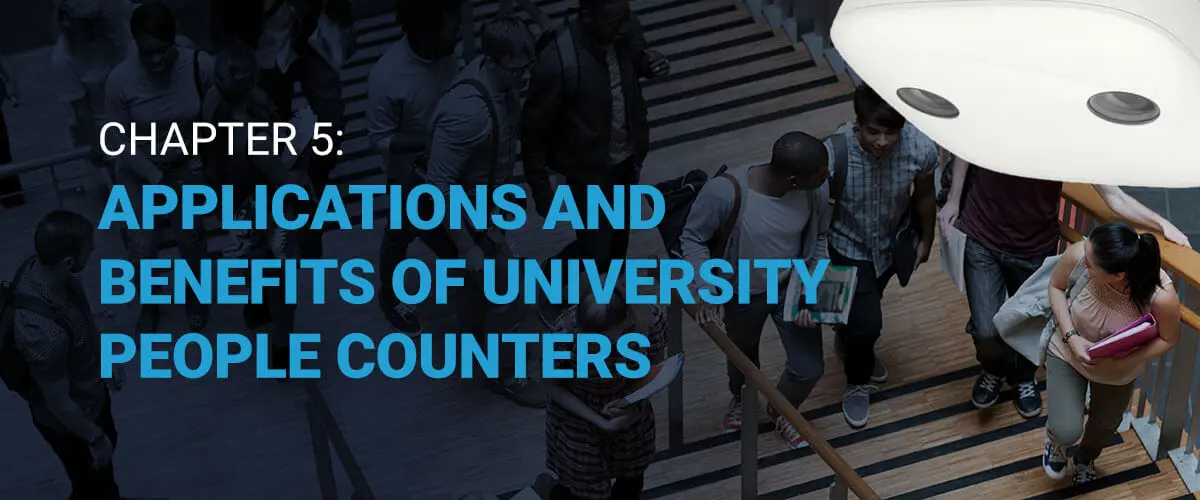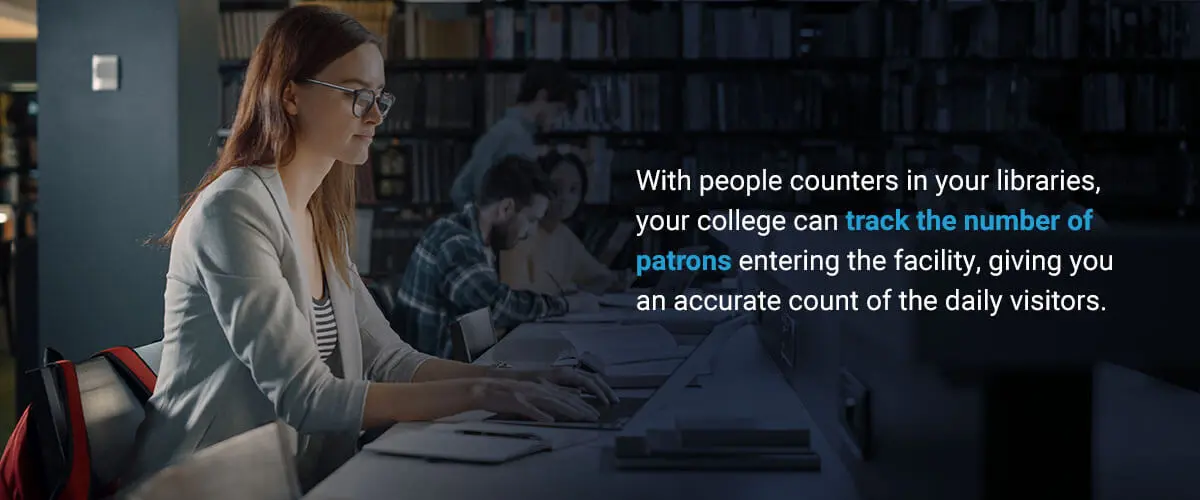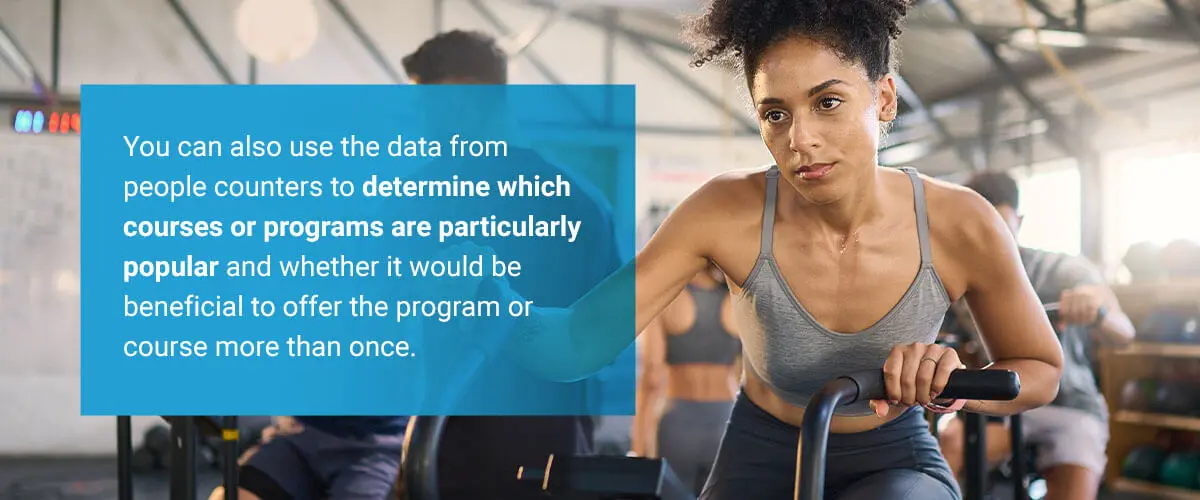
You can use people counters in various ways on your college or university campus. This chapter provides examples of the benefits of using people counters in different spaces around college campuses, from student unions, libraries and food service to entrances, gyms and sports facilities.
On university and college campuses, student unions are a hub of activity. Students and faculty visit student unions throughout the day between classes, and depending on what you offer in these facilities, they may stop to eat, study, ask for assistance at a help desk or meet up with friends.
With so many students and faculty stopping by throughout the day, the flow of visitors fluctuates constantly, and without reliable people counting technology, it can be difficult to track how many visitors enter student unions. This makes it challenging to determine the amount of resources needed to accommodate visitors or to fight against funding getting cut.
By tracking the foot traffic to your student unions with people counters, you can ensure the facility operates efficiently and optimally. You can also identify which spaces in the student union receive the most foot traffic so you can better concentrate money on those areas.
Modern libraries offer more than shelf after shelf of books. Today, you can find digital and physical resources in university libraries, including computers, newspapers, magazines, e-readers and academic resources. Some libraries may even include puzzles or other quiet activities students can use when they need a study break. Both students and faculty frequently visit university libraries for educational and class materials, as well as for a quiet location to complete work, apply for internships and collaborate on group projects.
With people counters in your libraries, your college can track the number of patrons entering the facility, giving you an accurate count of the daily visitors. You may also be able to determine which areas of the library are the most popular and are occupied the most frequently so you can better serve students and faculty. If the data points to a congested area within a library, for example, you can make adjustments to the layout to improve traffic flow and the patrons’ experience.

Some additional advantages of using a people counting system in a library include:
Libraries are essential on-campus facilities, and with people counters, you can ensure your libraries are as useful as possible to their patrons. Learn more about how to choose your library people counters from Traf-Sys and how they can help you avoid funding cuts.
Food service is particularly important on a college campus. Both students and faculty spend hours in your facilities in a given day, which means on-campus restaurants, cafes, cafeterias and vendors are essential. These areas consistently see a lot of foot traffic, especially on a large campus.
College people counters can identify the busiest hours for your food services. Knowing the times when faculty and students normally eat at these spaces and how much time they spend there can be beneficial information to have when assessing whether your campus is optimized for the students and faculty you serve.
For example, suppose you know that the cafeteria frequently sees high traffic between 11 A.M. and 1 P.M. In that case, you can ensure you have adequate staff available during these hours to serve patrons effectively. If the hours between 2 P.M. and 4 P.M. are slow, you can dedicate time between these hours to cleaning and clearing off tables. Additionally, when you understand the way the campus community uses your restaurant and café spaces, you can design the layouts of these areas to improve patrons’ overall experience.
Many university and college campuses also include gyms and sports facilities. These facilities tend to host special programs and sports events, offering large spaces for crowds to gather. With a people counting system, you can determine the peak hours of operation and use this information to influence scheduling for classes, programs and staffing. You can also use the data from people counters to determine which courses or programs are particularly popular and whether it would be beneficial to offer the program or course more than once.

Additionally, you can use the data from your people counters to prevent overcrowding and improve the experience of visitors and gym members. A gym requires frequent cleaning, especially after occupants finish using certain areas. Using people counters allows you to monitor high-traffic areas and determine how frequently cleaning should occur. Staff may even be able to clean equipment for the next user.
The busiest areas of your campus are the entrances. Every student, faculty member, lecturer, delivery person and visitor will pass through these entry points to access the campus. Using people counters, you can track how many people use an entrance throughout the day and at specific times. This can help you ensure your university has the appropriate organization and funding to operate efficiently and facilitate the smooth flow of traffic.
Though funding and entrance monitoring may not seem related, a people counting system can allow you to monitor daily wear and tear and foot traffic. You can then leverage this data to propose budgets for increased maintenance and improved infrastructure since you can predict what physical changes the entrance may experience by the next semester or the next year.
Additionally, entrance monitoring can ensure your university has enough staff present during peak hours and fewer workers during slower periods. By optimizing staff schedules, you can lower costs and avoid unnecessary overstaffing. This can help you combat funding getting cut. Different departments can also adapt physical advertising and marketing strategies according to the data, so their marketing efforts reach the right people when they are most likely to see it.
By placing people counters at your entrances, you can collect significant amounts of data and more easily assess demographics for marketing purposes. With our people counting system from Traf-Sys, sharing this information with shareholders is simple, as the software provides you with graphs and charts that display the data collected.